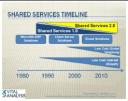You Can Read Code – But Can You Read a Software Vendor?
Recently, Brian Sommer of Vital Analysis was interviewed for a brief article on software contract negotiations. The article was for the AirTran in-flight magazine Go. You can peruse the online version of the magazine here. The article is on page 59.

Here’s what Brian originally pitched to the reporter:
It’s critical for your readers to fight for these changes before they sign the contract. Once signed, negotiating leverage goes to the vendor or goes away altogether.
Here are some of the clauses I like to fight for:
material change of control – Few software companies or their products are the same after they’ve been sold to another firm. Sure, you can (and should) ask for software source code escrow but you need to carefully word the deal so that you get license, maintenance and implementation monies returned/reimbursed if the vendor is sold (or sells the software product line) to another firm during the first year or so of licensing the product. Be sure your material change of control covers asset sales, acquisition, divestiture, loss of founder and insolvency.
entitlement to any and all ‘similar’ products – Too frequently, software vendors will use the maintenance monies you’ve dutifully paid them year after year to build an all-new product line. The problem comes up when they want you to pay a new licensing fee to get access to the new product that you helped fund. This one’s a no-brainer – you paid for it and you should get it.
discontinuance of application product lines – Vendors will cease to support old product lines. Make sure you know what this vendor’s policy for sunseting old products is and make sure your upgrade capabilities can afford or work as fast.
true enterprise license – No one can accurately predict what will happen with their user count, hardware configuration, technology innovations, etc. over the next few years. However, many firms own a piece of application software for ten years. If you agree to a CPU pricing deal, what happens if you want to use virtualization technology or a new multi-CPU server? Make sure the license does not tie you to an onerous cost structure or a pricing model that becomes obsolete in a couple of years
lock in price escalation for maintenance and service rates – Signing a software license agreement that ties annual maintenance payments to an unknown cost is unwise. Vendors typically tie maintenance to a fixed percent of the “then current list price of the application software”. If a vendor raises their list price 10% annually but your business didn’t grow, are you getting value for the extra money you’re being charged? No. Likewise, if a vendor’s prior price escalations have frequently exceeded the CPI (consumer price index), what does that say about their operating (in)efficiencies or greed? CPI should be used as the escalator for most deals.
Brian has negotiated a number of deals lately for clients including recent negotiation for a large software suite for one client and a manufacturing plant acquisition for another. He has also been on the road a lot lately (e.g., Korea) conducting negotiations training for major corporations.
Looking to make or re-negotiate a deal? Drop Brian a line at contact@vitalanalysis.com .
cross-posted to www.servicessafari.blogs.com





